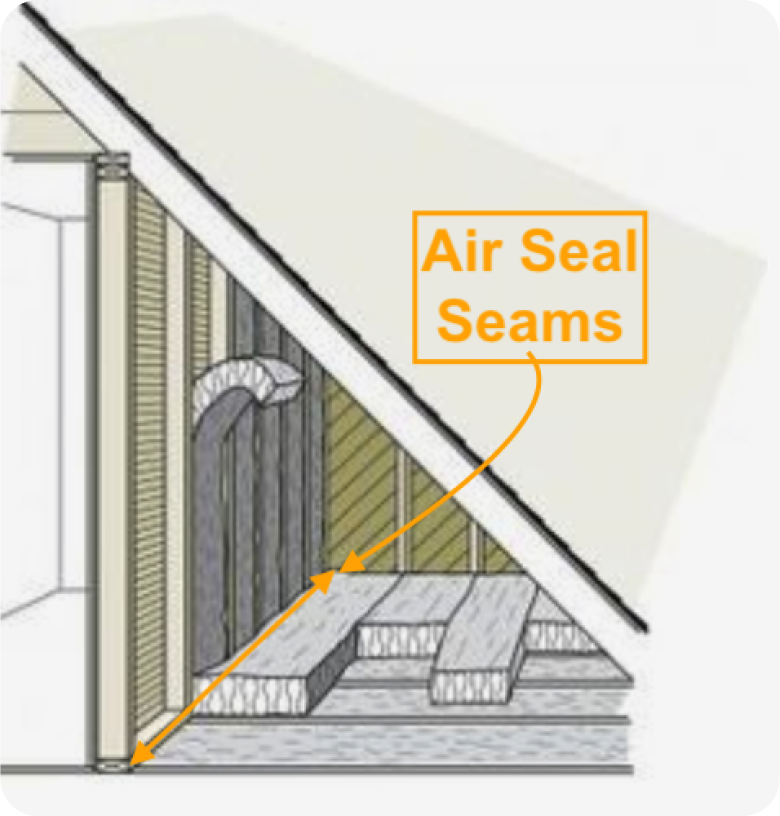Best Choices for Knee Wall Insulation
Fiberglass Batts. Common, cost-effective, but requires correct installation to avoid gaps.
Rigid Foam Board. High R-value, creates vapor barrier, but more expensive.
Spray Foam Insulation. Highest R-value, excellent sealing, but pricier and needs professional installation.
Blown-In Insulation. Good for hard-to-reach spaces, needs professional installation.
Regardless of the type of insulation you choose, remember to properly seal any air gaps in the knee wall before insulating. Always check local building codes or consult a professional.

Unlocking the Power of Knee Wall Insulation
Our knee wall insulation services offer cutting-edge solutions to optimize the performance of your home. With our cathedralization technique, we cater to both conditioned storage areas and spaces with ductwork in the attic floor. By air sealing knee walls, insulating rafters or framing, and utilizing advanced materials like cellulose and rigid foam board, we ensure superior insulation, improved energy efficiency, and a more comfortable living environment.
Insulate Knee Wall Slopes
Cathedralize the knee wall space if the storage area is conditioned. The cathedral option: air seal knee walls along the roofline and insulate the rafters with cellulose.
This innovative approach to knee wall insulation ensures that conditioned air remains within the storage area, creating a more stable and comfortable environment.

Insulated Knee Wall
Insulate the knee wall space if a storage area is not used. The cathedral option: air seal knee walls along the framing and insulate the vertical knee wall.
The cathedral option offers an effective solution by air sealing the knee walls along the framing and insulating the vertical knee wall, ensuring enhanced thermal performance and reduced energy consumption.

Cathedralize the knee wallspace if ductwork is on the attic floor
Option to cathedralize the knee wall space if there is no passive ventilation for the space. Continue the insulation from the attic down to the floor through the rafter.
Add rigid foam board and seal seams for additional insulation ( R-value ) and a vapor barrier or install drywall for a lower R-value with vapor and fire barrier ( intumescent barrier).


















.svg)
.svg)
.svg)
.svg)
.svg)
.svg)
.svg)
.svg)
.svg)
.svg)
.svg)
.svg)
.svg)
.svg)

.svg)
.svg)
.svg)
.svg)
.svg)
.svg)

















